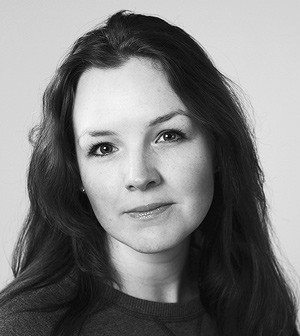Many tasks in modern working life are being taken over by new technology. Is the work of doctors under threat?

Photo: Einar Nilsen
According to a report commissioned by the Ministry of Education and Research, over the next 20 years one-third of the jobs in Norway will be largely automated as a result of computerisation (1). Computerisation has already revolutionised such sectors as entertainment and retailing, and many now predict that medicine will be next in line (2). There is little doubt that the doctor’s working day will change significantly in the years to come as a result of new technology, but are we also in danger of losing our jobs?
Norway is in a unique position in international terms, with one doctor per 218 inhabitants (3). Globally the situation is very different, and the World Health Organization has calculated a shortage of 2.4 million doctors (4). To improve their health services, low and middle-income countries must explore more effective strategies than simply training more doctors. In many parts of the world where the availability of qualified personnel is very limited, there may be good access to smartphones. An important element of the strategy to meet the need for health services is the development of technology that through digital tools provides access to medical information and competence (5). An example is a South African study that reports favourable results from allowing local healthcare workers to diagnose hearing loss with the aid of a smartphone (6). It is difficult to argue against the introduction here at home of technology that can improve and increase the efficiency of our own health services (7).
Not unexpectedly, commercial forces are also driving forward this development. There is already a considerable market for health apps that monitor and analyse their owner’s health by measuring blood pressure, pulse, number of steps and so on. The repertoire is constantly expanding, and an increasing number of apps offer services that come close to diagnostics. The health app market has traditionally tended to offer stand-alone applications, each of which handles specific tasks. The technology giant Apple recently launched HealthKit, a platform that collects information and measurements from different health apps in one place and provides a total picture of the user’s state of health. Apple has now entered into partnership with EPIC, the USA’s largest producer of software for processing patients’ medical records (8). This is where it really starts to get interesting: when patient-generated health information is fed directly into their medical records, this will give the doctor (and the patient) an entirely new tool for monitoring the patient’s health and a broader range of information on which to base therapeutic decisions.
This in itself will not mean less work for the doctor, rather the reverse. But with the aid of advanced decision support tools based on intelligent software, it will be possible to analyse large amounts of information from structured patient records and end up with suggestions for differential diagnoses, the next stage of the assessment, and then treatment options (9). This type of artificial intelligence will exceed the doctor’s ability to maintain an overview of an ever-expanding medical knowledge base and help her to avoid cognitive skewness and erroneous conclusions. Clinical assessments will not be affected by stress and tiredness. However, intelligent analysis tools can be no better than the information fed into them, and a main challenge has been the fact that registering structured data is time-consuming. When patients themselves can supply information to the system, we will be closer to finding a solution to this problem. In future, might patients be able to enter their own anamnesis, add current measurements, blood test results and possibly photographs, and obtain a diagnosis and suggestions for treatment or a recommendation to consult a specialist directly on their screens? In this way, recording the anamnesis as well as the diagnostic aspect of the doctor’s job might gradually face competition from technology.
In this situation, the medical profession must show that it has more to offer than is provided by digital tools. «Dear Doctor, don’t be an app,» wrote Gunnar Tjomlid recently after a less than satisfactory encounter with the health service (10). This is where much of the challenge lies. We doctors must be more than mere robots who key data into the computer and read off recommendations from guidelines and decision support tools. Humans are still superior to artificial intelligence when it comes to interpreting and responding appropriately to verbal and non-verbal communication. Doctors must present themselves as fellow humans with empathy and competence, as people who can help patients to navigate their way through the jungle of information and recommendations as well as feelings and preferences when choices have to be made on matters of life and health.
And even more importantly, doctors themselves must play an active role in this development. The e-health market is currently awash with businesses motivated by profit, some serious and some frivolous, and there is a notable absence of medical quality assurance and validation. We must ensure that new technology adheres to a high professional standard and actually results in improved medical assistance. In a computerised health service, doctors must also take clear responsibility for ensuring that medical assistance also reaches those who cannot cope with smartphones. The quality of the assistance and treatment given to patients must not be contingent on their level of function.